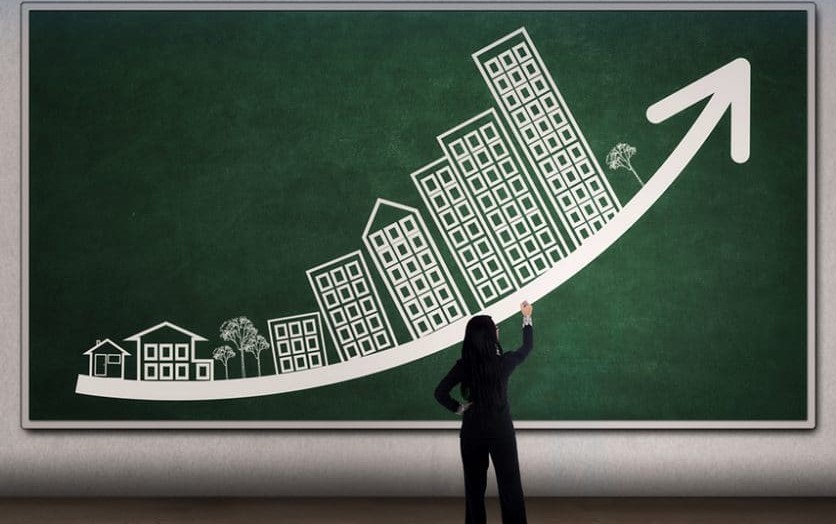Restrictions induced by the Covid-19 pandemic have made homebuyers realise the importance of spacious homes. “This sentiment is reflected in an increased interest towards larger and spacious homes from Indian as well as NRI buyers,” says Sarthak Seth, Chief Marketing Officer, Tata Realty & Infrastructure Limited.
In an exclusive interview with RoofandFloor, he spoke about how real estate companies are realigning their business strategies to sustain in the current times, future trends, and much more.
Here are the excerpts.
How has the pandemic changed the way real estate operates in India?
In ‘the new normal’, developers need to adapt and evolve to the market realities. This includes paying attention to the changes in consumer behaviour and accordingly modifying the sales, marketing, communication strategies to reach out in a manner that is best suited for homebuyers. At Tata Realty, we are already adapting to these developments and are well-positioned for success in a post-pandemic world.

While there is no major change that homebuyers need to adapt to in terms of processes, they will soon have to adapt to the changes in buying trend. Earlier, buyers would visit the property four to five times before locking in, but now as that is not possible. However, real estate being an investment-heavy asset coupled with a strong emotional element, there is a need to look at the product and understand the feel before making the final investment.
Apart from this, all other processes have been simplified due to digital initiatives, and the dependence on the physical element has reduced significantly.
Have you started receiving enquiries? Are there any major changes in homebuyers’ preferences?
Restrictions induced by the Covid-19 pandemic have made homebuyers realise the importance of spacious homes. This sentiment reflected through an increase in interest towards larger and spacious homes from Indian as well as NRI buyers.
During this period of this pandemic, the realty market has seen shifting buyer preferences from under-construction to ready-to-move-in properties due to the comfort and convenience it provides.
In terms of enquiries, we have been witnessing a significant increase in sales for certain properties in the metro cities, despite the cash-strapped situation everyone has been in. Ramping up our digital adoption, both in terms of business and marketing functions, certainly helped us stay relevant to our consumers despite social distancing norms.
What should the government do to revive consumer demand?
RBI has demonstrated agility by announcing measures to ease liquidity, and they have certainly provided some relief. However, capital is still limited and would need to be rationed. Despite the lower interest rate, the overall costing is still more than anticipated. Arresting the spread of Covid-19 and reviving the economy would remain challenging.
Several cash positive projects in the industry are stuck largely due to lack of capital and with no fault of developers. The cost of governance, compliance, capital and yet state government delays has made real estate unviable for many. Given the extraordinary circumstances, we have made representations to the government to initiate measures to:
Improve developer liquidity
- Reduce provisioning requirements for loans to the real estate sector
- The flexibilities offered to the banks in respect of moratorium, deferral, etc. should also be passed on to NBFCs
- Foreign Institutional Investors should be allowed to directly invest in ready-to-move-in residential inventory for a period of five years
- GST input credit should be allowed for residential and commercial
Provide stimulus to consumers
- Subvention scheme for real estate should be restored
- Interest rate subsidy of 3% for all buyers of residential units for a period of three years
- State stamp duty on registration should be 2% only.
- Remove capital gain
- Allow deduction of interest paid to bank from rental incomes of houses.
- Provide stimulus through taxation measures- increase limits under section 24 b
- Set more distressed funds
- Abolish GST on JD Agreements to allow consolidation.
- GST on cement should be reduced from 28% to 12%
What are some trends that we can expect in the times to come?
Throughout the industry and beyond, various experts have been sharing their unique approaches for designing residences in the new normal. They have been setting new trends to accommodate healthier, wellness-oriented, and holistically built spaces.
Flexibility and adaptability are the keywords of this era, with people coming up with new solutions that might also change with the changing dynamics of the pandemic. The definition of work, worker, and workplace continues to change due to the pandemic, forcing us to evaluate spaces through the lens of work-from-home and social distancing norms.
Workplaces and homes will have to be redefined, in terms of the experiences they offer and the convenience they bring to our daily routines.
Inclusive design is being re-interpreted to accommodate the changing needs progressively and incrementally- including the flexibility in leasing models, flexible study in the apartment, home automation, customisable business centres in apartment complexes, etc.
Should home seekers wait for property prices to correct or take the plunge?
There is no time like the present to book a property, either for personal use or from an investment standpoint. While it is understandable that some segments of the society are cash strapped due to the pandemic, there is still a large segment that is actually increasing their savings during this lockdown.
As they say, strike when the iron is hot. And this is definitely the best time to invest in real estate as there are several offers by reputed developers for the festive season.
People have understood the importance of spacious homes, balconies, large developments with in-house amenities, leading to an increase in demand for a quality lifestyle. With many such developments currently available in the market, the time to take the plunge is now.
Your take on the future of residential real estate post-COVID.
The buyers are now keen to buy from reputed developers or ready projects. Digital infrastructure is likely to enable sales considerably. The Covid-19 pandemic is compelling the industry to look at wellness as a major priority area of building design and construction.
As India slowly but steadily resumes work, developers need to consider all aspects of safety and upgradation of design features to accommodate measures that aid people during a pandemic.

